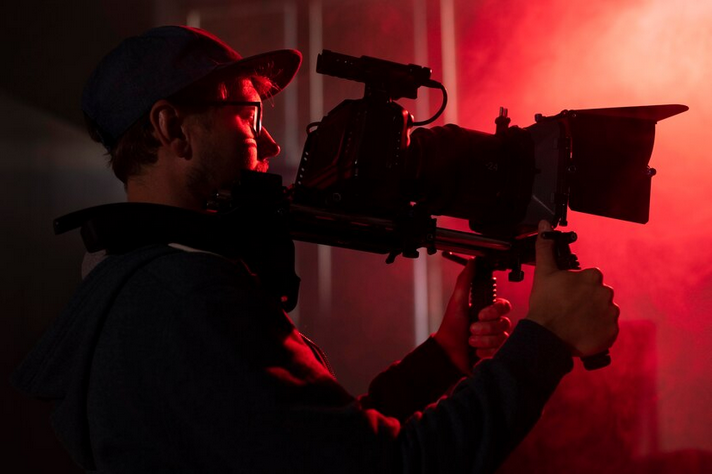Cinematography stands as one of the most vital and artistic branches of filmmaking, where the visual narrative is crafted with precision and creativity. It is the art of capturing moving images that not only tell a story but also evoke emotions, setting the tone for the viewer’s experience. In a world where visual content dominates, understanding the intricacies of cinematography becomes essential for anyone looking to excel in the film industry. This article delves into the various techniques and tips that define the art of cinematography, particularly highlighting practices that resonate in the vibrant landscape of Los Angeles.
Table of Contents
ToggleUnderstanding the Fundamentals of Cinematography
At its core, cinematography is about more than simply recording images; it is about creating a visual language that communicates complex ideas and emotions. Composition, lighting, and camera movement are the three foundational elements that every aspiring cinematographer must master. Composition involves framing each shot in a way that draws the viewer’s eye to the most crucial aspects of the scene. This includes the rule of thirds, leading lines, and symmetry. For instance, in a dramatic scene, positioning the subject off-center can create a sense of tension and unease, effectively enhancing the narrative.
Lighting, on the other hand, serves as the mood setter. The way light interacts with the subject can transform the atmosphere of a scene entirely. Cinematographers often play with different sources of light—natural and artificial—to achieve the desired effect. For example, soft, diffused lighting can evoke a sense of calm, while harsh, direct lighting can instill feelings of anxiety or urgency. As the sun sets over the bustling city of Los Angeles, the golden hour provides a magical quality to outdoor shoots, allowing cinematographers to capture stunning visuals that resonate deeply with audiences.
Camera movement adds another layer of storytelling. Techniques such as panning, tilting, and tracking can guide the viewer’s focus and enhance the narrative flow. A slow pan across a scene can build anticipation, while a rapid zoom can create excitement. The decision on how to move the camera is often dictated by the story’s emotional core, and understanding this relationship is essential for any cinematographer looking to make an impact.
The Importance of Color Grading
As the visual narrative unfolds, the role of color grading cannot be overlooked. This post-production process enhances the emotional impact of the footage by manipulating colors and tones. Different color palettes can evoke specific feelings; for instance, warm tones might suggest comfort and nostalgia, while cooler tones can create a sense of detachment or sadness. Cinematographers in Los Angeles often collaborate closely with colorists to achieve a cohesive look that aligns with the director’s vision.
A prime example of effective color grading can be seen in films that utilize contrasting colors to symbolize conflict or harmony. By carefully selecting a color scheme that complements the narrative, cinematographers can elevate the storytelling experience. Furthermore, understanding how different cameras interpret color can significantly affect the final outcome. Factors such as sensor size, dynamic range, and lens choices all play a critical role in how colors are captured and presented.
The Role of Technology in Modern Cinematography
The evolution of technology has dramatically transformed the landscape of cinematography. With advancements in camera technology, cinematographers now have access to tools that allow for unprecedented creativity and flexibility. Digital cameras have largely replaced film, offering features such as high dynamic range and the ability to shoot in low-light conditions without sacrificing quality. This shift has empowered cinematographers to explore new creative avenues and push the boundaries of visual storytelling.
Moreover, the rise of drones has introduced an innovative perspective to cinematography. Aerial shots provide a grandiose view of landscapes and settings that were once challenging to capture. This technology has become particularly popular in Los Angeles, where the diverse geography offers stunning backdrops for filmmakers. The ability to seamlessly integrate aerial shots into narratives can elevate the production value and transport audiences into the heart of the story.
Practical Tips for Aspiring Cinematographers
For those looking to break into the field, there are several practical tips that can aid in developing a unique style and vision. First and foremost, aspiring cinematographers should cultivate a keen eye for detail. Observing the world around them, analyzing how light interacts with different surfaces, and studying the work of renowned cinematographers can provide invaluable insights. Understanding the nuances of light and shadow will greatly enhance one’s ability to create striking imagery.
Networking within the industry is equally crucial. The film community in Los Angeles is vast and diverse, providing ample opportunities for collaboration. Engaging with fellow filmmakers, attending workshops, and participating in film festivals can lead to valuable connections and mentorship opportunities. These relationships can offer guidance, inspiration, and potential career advancements.
Additionally, hands-on experience is irreplaceable. Whether through internships, assisting on sets, or working on personal projects, gaining practical experience allows aspiring cinematographers to hone their craft and develop their unique voice. Experimenting with different techniques, styles, and equipment can lead to breakthroughs that shape their artistic identity.
Conclusion
In a world where the visual medium reigns supreme, mastering the art of cinematography is essential for any filmmaker aspiring to leave a mark. The techniques and tips discussed in this article serve as a foundation for understanding how to capture compelling stories through moving images. By focusing on composition, lighting, camera movement, color grading, and embracing modern technology, cinematographers can craft narratives that resonate deeply with audiences.
As cinematographers in Los Angeles continue to push creative boundaries, collaborating with skilled professionals and leveraging the latest technology will remain paramount. For those seeking expert guidance in this dynamic field, partnering with a reputable production company can prove invaluable. Enlightened Pictures Inc. stands ready to support emerging talent and seasoned professionals alike, providing the resources and expertise needed to bring cinematic visions to life. Embrace the art of cinematography and watch your storytelling evolve into a powerful visual experience.




